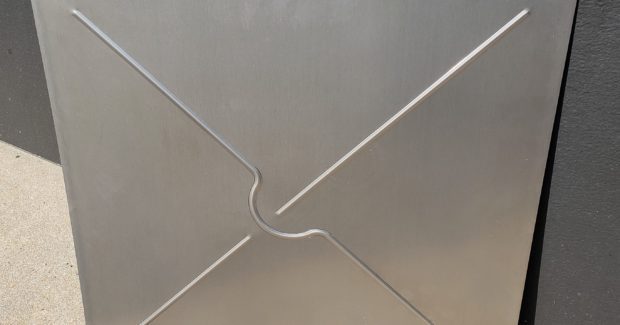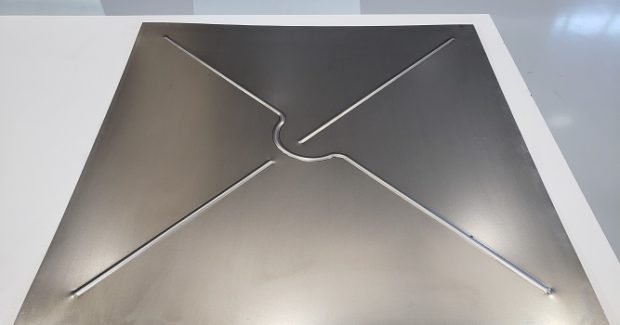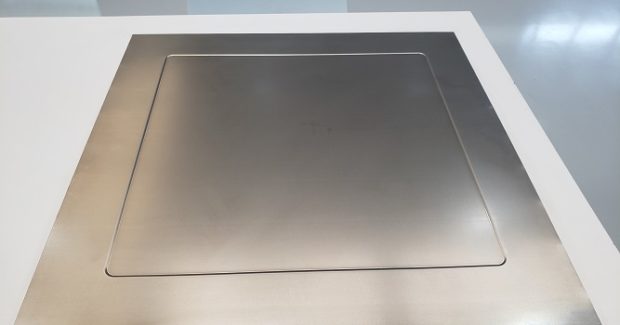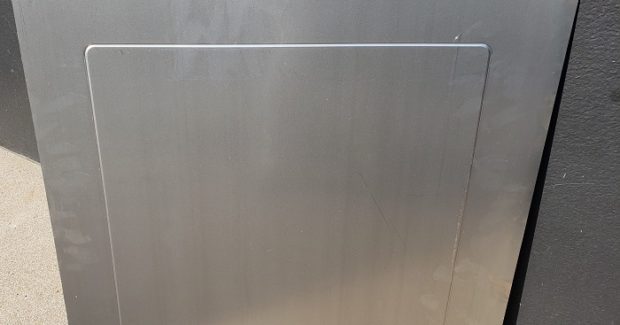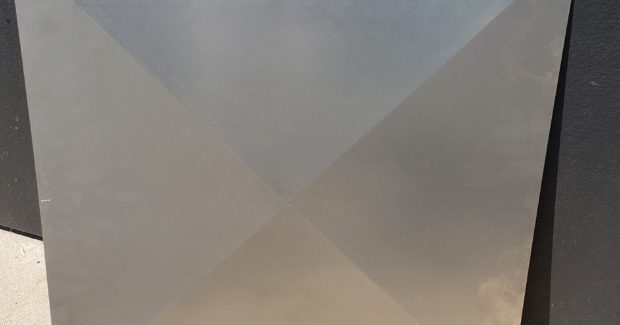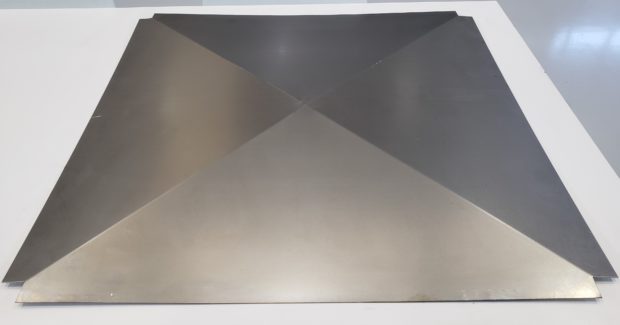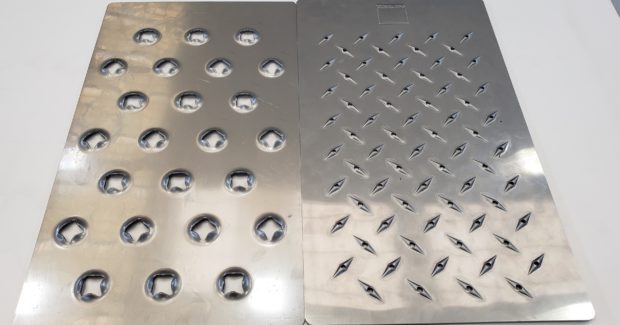Built to Last: Sheet Metal Design with Strength in Mind
Sheet metal has a high strength-to-weight ratio and good malleability that can provide form and structure to products, but because it is flat and bends easily, it doesn’t always work. Here are some ways to increase the structural strength of flat sheet stock without adding gussets or increasing the weight of the product.
Posted: August 16, 2018
Sheet metal is a versatile material with a huge variety of applications that is matched only by the diversity of different tools and methods used to work the material. From hydroforming to plasma cutting, from metal shearing to metal spinning, fabricators use a dizzying array of common and not-so-common processes to transform raw sheet stock into finished goods. Sheet metal materials generally enjoy a high strength-to-weight ratio and good malleability, so they are often used to provide form and structure to products: the sturdy frame that acts as a backbone for an assembly, or the resilient cover panel that provides rugged separation between “inside” and “outside” are both familiar designs to sheet metal workers. However, using sheet metal for structure also presents some inherent challenges because it is a flat stock that is highly malleable (flexible). In other words, using sheet metal in its raw flat form to provide structural rigidity to a three-dimensional product doesn’t always work: if the component being made expects to undergo strain under normal conditions, then it must be reinforced or braced in some way to maintain shape and provide durable, long-lasting service.
Arguably the most straight-forward method of bracing a flat metal surface is to add ribbing or gussets, like the ones that support a bookshelf mounted to a wall. Gussets may be specified due to structural requirements or even aesthetic considerations, but they come with drawbacks from an engineering standpoint: additional pieces must be fabricated (the gussets) to support the main product in doing its job, so the complexity of the manufacturing process increases. Adding gussets to an assembly increases the material consumption of the product, and since the gussets must be joined to the surface they will somehow support, the cost of joining must be factored in as well. Even more important in some applications, the gussets will increase the overall weight of the assembly. If the final product goes onto a vehicle, or if it needs to be portable, increasing the weight may be an unacceptable trade-off to increase rigidity. Weight and efficiency constraints may also rule out the other simple way of making sheet metal parts stronger: increasing the thickness of base material used.
Fortunately, there are a number of ways to increase the structural strength of flat sheet stock without adding gussets or increasing the weight of the product. Applying tension to a sheet of steel will increase the rigidity of the sheet, with the effect of making an individual metal part better able to resist strain forces and retain its intended shape. Fabricators see this process in action every time their press brakes operate: the force applied by the press brake tools causes compression and tension to occur within the molecular structure of the workpiece, which immediately reduces the flexibility of the part and increases its rigidity. The conclusion here is that you can increase the rigidity of a metal part by adding bends – which is the fundamental purpose of many types of channels being fabricated every day. But what if the application of the sheet metal component doesn’t allow for adding flanges? A channel obviously can’t do the job of a cover panel, so how do we make our cover panel more rigid if its body has to be flat?
Other ways of tensioning the part is an application area where sheet metal punching and stamping processes have an advantage over other cutting methods, because these types of equipment can also form metal at the same time they are separating cut parts from raw sheets. Just about any type of forming will increase the tension in a sheet metal part and increase its overall rigidity, so the application of the product drives what our design options will be. A great example of this is the class of formed sheet metal structures known collectively as “tread plate.” The intention behind metal treads is to create a surface that people can walk on with reasonable traction, as opposed to walking on a flat piece of metal that can be quite slippery under certain conditions. A side benefit of these treads is that they also increase the rigidity of the metal plate, which can allow metal steps and catwalks made from relatively thin material to support a heavy weight load without deforming. These days, tread-style formed features don’t have to be restricted to floor plates: they can also be an aesthetically pleasing way to increase the strength of any flat panel. The endless varieties of tread patterns possible also creates opportunities for companies to design a unique look and feel into their products.
Other smart forming strategies for making rigid panels include features known as offsets and beads. An offset is an area of a part where the surface of the metal has been raised or depressed to create two different planes. The depth of most common metal offsets is around one to two material thicknesses, but punching machines can create an offset surface with a depth of three or four times the material thickness if desired; drawing an even deeper offset generally requires a stamping process. Offsets are commonly used to increase rigidity and add visual appeal to door panels and cabinet sides, while still allowing the part some degree of flexibility (which is helpful if field assembly or servicing of the product is required). On the other hand, if the panel needs to be extremely rigid and non-flexible, beading becomes a better option for bracing. A bead is a formed structure most commonly having an arch or half-round cross-section that creates lots of tension in a flat sheet and induces a high degree of rigidity. With the advent of wheel-style punching tools, beads can be arranged and shaped in ways that specifically reinforce a given part against a certain type of loading.
Press brakes can also generate many of these same features in sheet metal but, like stamping presses, they generally require specialized and dedicated toolsets to make bracing forms, which limits their flexibility to process different parts. One exception is the classic “cross-break” bending method that uses standard bending tools to make an “X” shaped pair of very shallow bends across the middle of the panel – a forming technique that is often a necessity in ventilation ductwork. Ducts are made of very thin sheets to be as lightweight as possible, but they must also avoid flexing under the changing pressure load of air flowing through their inside. Only a few degrees of bending angle are needed, because the cross-break pattern allows the thin panels to stay relatively flat but still benefit from the increased rigidity that bending (tensioning) the sheet provides.
All of this just scratches the surface of a topic that covers a lot of ground, but for engineers working with sheet metal products it is a good habit to keep thinking about fundamentals. Sometimes elegant solutions to manufacturing challenges sit just around the corner, waiting to be stumbled across. Clever use of the excellent forming properties of sheet metal can lead to designs that are more efficient to produce, more attractive for the final customer and, most important of all, engineered and built to deliver years of safe and reliable performance.
Subscribe to learn the latest in manufacturing.

